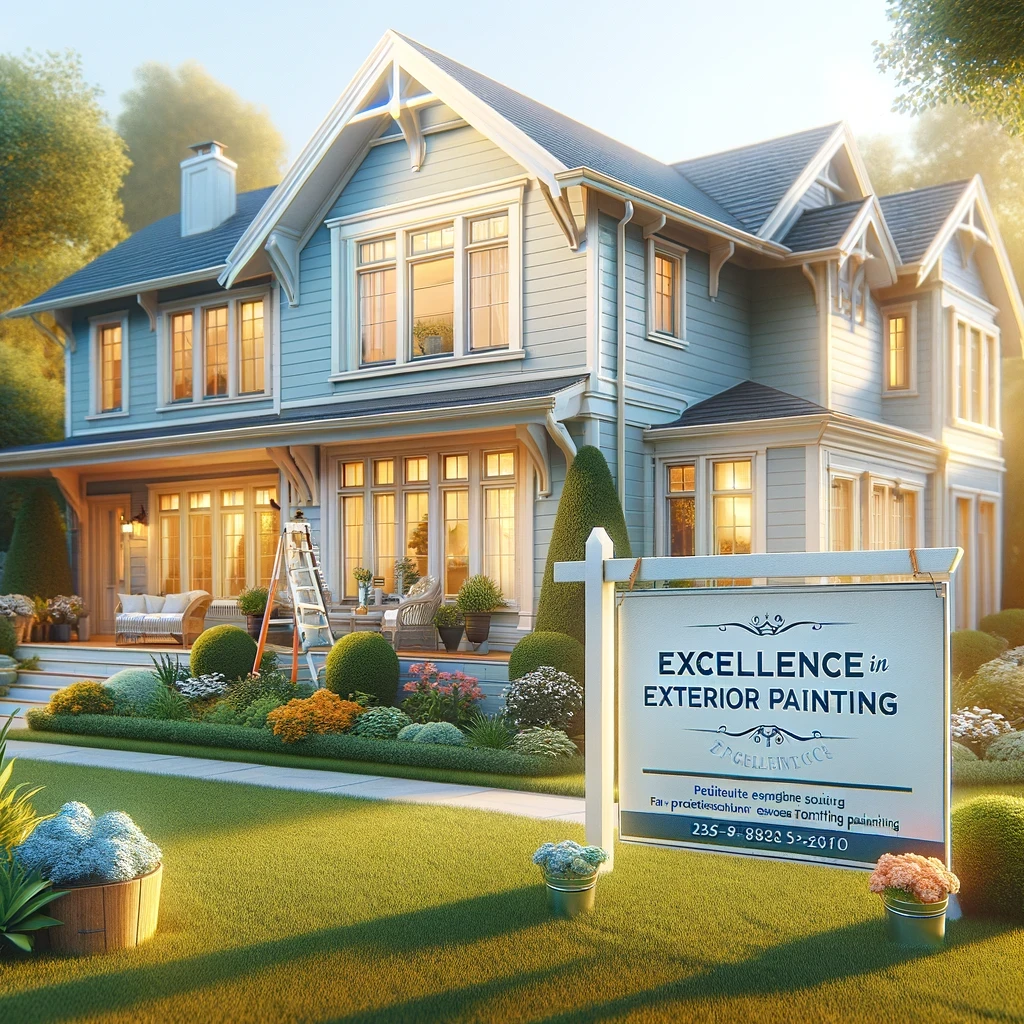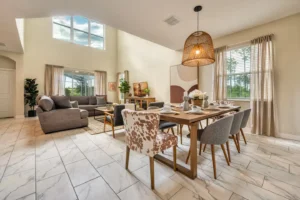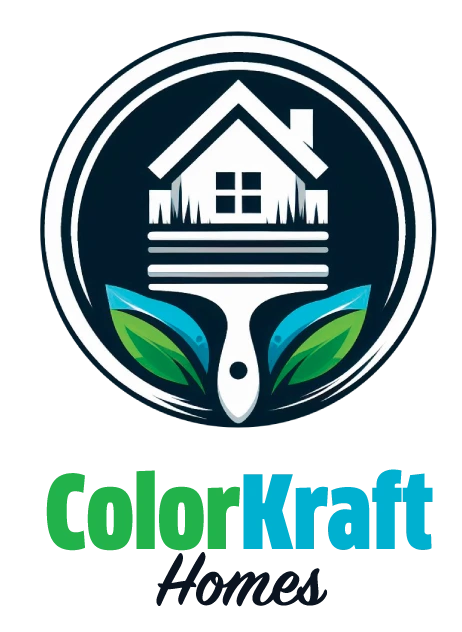DIY house painting is a popular and rewarding project that many homeowners undertake. Not only does it allow you to save money, but it also gives you a sense of accomplishment and satisfaction. With the right tools, materials, and knowledge, you can transform your home and give it a fresh new look. In this article, we will explore the benefits of DIY house painting, offer tips for choosing the right paint color, discuss the necessary steps for preparing your home, provide a list of essential tools and materials, offer tips for achieving a professional-looking paint job, discuss common mistakes to avoid, highlight the transformative power of paint with ColorKraft Homes, compare hiring a professional painter versus DIY house painting, and conclude with the importance of enjoying your newly painted home.
Key Takeaways
- DIY house painting can save you money and give you a sense of accomplishment.
- Choosing the right paint color can enhance the mood and atmosphere of your home.
- Proper preparation is key to achieving a smooth and long-lasting paint job.
- Essential tools and materials for DIY house painting include brushes, rollers, drop cloths, and paint trays.
- Avoid common mistakes like not using primer or not allowing enough drying time between coats.
Benefits of DIY House Painting
One of the main benefits of DIY house painting is the cost savings compared to hiring a professional painter. Painting your own home can save you hundreds or even thousands of dollars in labor costs. By doing the work yourself, you eliminate the need to pay for someone else’s time and expertise. Additionally, you have control over the quality of materials used and can choose more affordable options without compromising on the final result.
Another benefit of DIY house painting is the sense of accomplishment and satisfaction that comes with completing a project on your own. There is something incredibly rewarding about stepping back and admiring a freshly painted room or exterior. You can take pride in knowing that you put in the time and effort to transform your space. DIY house painting also allows you to personalize your home and make design choices that reflect your style and preferences.
Furthermore, DIY house painting offers flexibility and control over the project timeline. When hiring a professional painter, you may have to wait weeks or even months for an available slot in their schedule. By doing it yourself, you can start and finish the project on your own timeline. This is especially beneficial if you have a busy schedule or want to complete the project in stages. You can also make changes and adjustments along the way without having to consult with a professional.
Choosing the Right Paint Color
Choosing the right paint color is a crucial step in any DIY house painting project. The color you choose can greatly impact the overall look and feel of a room or exterior. Here are some tips for selecting the right paint color for your home:
1. Consider the room’s purpose and lighting: Different colors evoke different emotions and moods. For example, warm colors like red and orange can create a cozy and inviting atmosphere, while cool colors like blue and green can promote relaxation. Consider the purpose of the room and how you want it to feel. Additionally, take into account the natural lighting in the space. Natural light can affect how a color appears, so it’s important to test paint samples in different lighting conditions.
2. Test paint samples: It’s always a good idea to test paint samples before committing to a color. Paint a small section of the wall or use sample boards to see how the color looks in your space. This will give you a better idea of how it will look once it’s applied to the entire room or exterior. Keep in mind that colors can look different depending on the lighting and surrounding elements, so it’s important to test them in various areas of the room.
Preparing Your Home for Painting
| Area | Task | Time Required | Difficulty Level |
|---|---|---|---|
| Interior Walls | Clean walls with soap and water | 1-2 hours | Easy |
| Exterior Walls | Power wash walls to remove dirt and debris | 2-4 hours | Moderate |
| Doors and Windows | Remove hardware and sand surfaces | 2-3 hours | Moderate |
| Trim and Molding | Fill gaps and holes with wood filler | 1-2 hours | Easy |
| Floors | Cover floors with drop cloths or plastic sheeting | 30 minutes | Easy |
Before you start painting, it’s important to properly prepare your home. This will ensure that the paint adheres well and lasts longer. Here are some necessary steps for preparing your home for painting:
1. Clean surfaces: Remove any dirt, dust, or grease from the surfaces you plan to paint. Use a mild detergent and water solution to clean walls, ceilings, and trim. For exterior surfaces, consider using a power washer to remove dirt and grime.
2. Repair any damage: Inspect the surfaces for any cracks, holes, or other damage. Fill in any holes or cracks with spackle or putty and sand them smooth. Repair any damaged trim or siding before painting.
3. Protect floors and furniture: Cover floors with drop cloths or plastic sheets to protect them from paint drips and spills. Move furniture away from the walls or cover it with plastic sheets. Use painter’s tape to protect trim, windows, and other areas that you don’t want to paint.
Tools and Materials Needed for DIY House Painting
To successfully complete a DIY house painting project, you will need the right tools and materials. Here is a list of essential items you will need:
1. Brushes: Invest in high-quality brushes in various sizes for different areas of your home. A good brush will give you better control and coverage.
2. Rollers: Rollers are great for covering large areas quickly and evenly. Choose a roller with the appropriate nap length for your surface (shorter nap for smooth surfaces, longer nap for textured surfaces).
3. Drop cloths: Protect your floors and furniture with drop cloths or plastic sheets. These will catch any paint drips or spills and make cleanup easier.
4. Painter’s tape: Use painter’s tape to protect trim, windows, and other areas that you don’t want to paint. Make sure to press it down firmly to create a clean edge.
5. Paint trays and liners: Pour your paint into a tray for easy access while painting. Use liners to make cleanup quick and easy.
6. Sandpaper: Sandpaper is essential for smoothing out rough surfaces and removing any imperfections before painting.
7. Primer: Primer helps the paint adhere better and provides a smooth surface for the topcoat. Use a primer if you’re painting over a dark color or if the surface is stained or damaged.
8. Paint: Choose a high-quality paint that is suitable for the surface you’re painting. Consider factors such as durability, washability, and sheen. ColorKraft Homes offers a range of high-quality, eco-friendly paints that are perfect for DIY house painting projects.
You can find these tools and materials at your local home improvement store or online.
Tips for a Professional-Looking Paint Job

ColoKraft Homes – Trusted & Affordable
Achieving a professional-looking paint job is not as difficult as it may seem. With the right techniques and attention to detail, you can achieve a smooth and flawless finish. Here are some tips for a professional-looking paint job:
1. Use high-quality paint: Investing in high-quality paint will give you better coverage, durability, and color retention. Cheap paints may require multiple coats and may not hold up well over time.
2. Prepare the surface properly: Properly preparing the surface before painting is crucial for a professional-looking finish. Clean the surface, repair any damage, and sand it smooth. Use primer if necessary.
3. Apply multiple coats: Applying multiple thin coats of paint will give you better coverage and a more even finish. Allow each coat to dry completely before applying the next one.
4. Use the right technique: Use long, smooth strokes when applying paint with a brush or roller. Avoid pressing too hard or going over the same area too many times, as this can create brush strokes or roller marks.
5. Cut in carefully: When using a brush to cut in around trim, windows, and other areas, take your time and use a steady hand. Use painter’s tape to create clean edges if needed.
6. Watch for drips and brush strokes: Keep an eye out for drips or brush strokes as you’re painting. If you notice any, smooth them out immediately with a brush or roller.
Common DIY House Painting Mistakes to Avoid
 While DIY house painting can be a rewarding project, there are some common mistakes that homeowners make. Here are some mistakes to avoid:
While DIY house painting can be a rewarding project, there are some common mistakes that homeowners make. Here are some mistakes to avoid:
1. Not properly preparing surfaces: Skipping the necessary steps for preparing surfaces can result in paint that doesn’t adhere well or lasts as long. Take the time to clean, repair, and prime surfaces before painting.
2. Using the wrong type of paint: Using the wrong type of paint for a specific surface can lead to poor adhesion, peeling, or cracking. Make sure to choose a paint that is suitable for the surface you’re painting.
3. Rushing the job: Painting requires patience and attention to detail. Rushing through the job can result in sloppy work and an uneven finish. Take your time and allow each coat to dry completely before applying the next one.
4. Not using primer when necessary: Primer is essential for certain surfaces, such as bare wood or stained areas. Skipping primer can result in poor coverage and a less durable finish.
5. Overloading the brush or roller: Overloading your brush or roller with too much paint can lead to drips and an uneven finish. Use a moderate amount of paint and apply it in thin, even coats.
6. Ignoring safety precautions: Painting can involve working at heights or with potentially hazardous materials. Always follow safety precautions, such as using a ladder properly and wearing protective gear.
By avoiding these common mistakes, you can ensure a successful DIY house painting project.
Transforming Your Home with ColorKraft Homes
Paint has the power to completely transform the look and feel of a home. Whether you’re looking to update your interior or give your exterior a fresh new look, ColorKraft Homes offers a range of high-quality paints that are perfect for DIY house painting projects. Their paints are made with eco-friendly formulas that are low in VOCs (volatile organic compounds), making them safe for you and your family.
ColorKraft Homes offers a wide variety of colors and finishes to suit any style or preference. From bold and vibrant hues to soft and neutral tones, you can find the perfect color to enhance your space. Their paints are also highly durable and washable, ensuring that your newly painted surfaces will last for years to come.
Hiring a Professional Painter vs. DIY House Painting
When it comes to house painting, you have the option to hire a professional painter or tackle the project yourself. Both options have their pros and cons, and it’s important to consider your specific situation before making a decision.
Hiring a professional painter can save you time and ensure a high-quality finish. Professionals have the experience, tools, and expertise to complete the job efficiently and effectively. They can also offer advice on color selection and provide recommendations for the best paint products. However, hiring a professional painter can be expensive, especially if you have a large project or multiple rooms to paint.
On the other hand, DIY house painting allows you to save money and have control over the project. You can choose your own colors, materials, and timeline. DIY house painting also gives you a sense of accomplishment and satisfaction. However, it requires time, effort, and attention to detail. You will need to invest in the necessary tools and materials and be prepared to do the work yourself.
To determine which option is best for you, consider factors such as your budget, time availability, skill level, and the size of the project. If you have a small project or enjoy DIY projects, tackling the painting yourself may be a rewarding experience. However, if you have a large project or prefer to leave it in the hands of professionals, hiring a painter may be the better option.
Enjoy Your Newly Painted Home
In conclusion, DIY house painting offers numerous benefits, including cost savings, a sense of accomplishment, and flexibility. By choosing the right paint color, properly preparing your home, using the right tools and materials, and following the  necessary steps, you can achieve a professional-looking paint job. Avoiding common mistakes and taking your time will ensure a successful project.
necessary steps, you can achieve a professional-looking paint job. Avoiding common mistakes and taking your time will ensure a successful project.
ColorKraft Homes offers a range of high-quality paints that can transform your home. Their eco-friendly formulas and wide variety of colors and finishes make them a great choice for DIY house painting projects. Whether you decide to hire a professional painter or tackle the project yourself, the most important thing is to enjoy your newly painted home and the fresh new look it brings.
If you’re considering tackling a DIY house painting project, it’s important to be well-prepared and informed. One helpful resource to check out is an article on Painter Near Me‘s website titled “Tips for Painting a 2000 Sq Ft House.” This article provides valuable insights and step-by-step instructions on how to efficiently paint a house of this size. Whether you’re in Laguna Niguel or Anaheim, this article will equip you with the knowledge you need to achieve professional-looking results. So, before you pick up that paintbrush, make sure to give this article a read!
FAQs

What is DIY house painting?
DIY house painting refers to the process of painting the interior or exterior of a house by oneself, without hiring a professional painter.
What are the benefits of DIY house painting?
DIY house painting can save money, allow for greater control over the final result, and provide a sense of accomplishment.
What tools and materials are needed for DIY house painting?
Tools needed for DIY house painting include paint brushes, rollers, paint trays, painter’s tape, drop cloths, and a ladder. Materials needed include paint, primer, and cleaning supplies.
What are some tips for successful DIY house painting?
Some tips for successful DIY house painting include properly preparing the surface to be painted, using high-quality paint and tools, applying paint in thin, even coats, and allowing sufficient drying time between coats.
What are some common mistakes to avoid when DIY house painting?
Common mistakes to avoid when DIY house painting include failing to properly prepare the surface to be painted, using low-quality paint or tools, applying too much paint at once, and failing to allow sufficient drying time between coats.
Is DIY house painting suitable for everyone?
DIY house painting can be physically demanding and may not be suitable for everyone. Individuals with physical limitations or health concerns should consult with a professional painter before attempting to paint their own house.
Page design by: Website Design and Marketing Near Me


